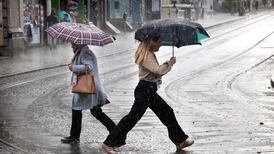The public perception of the number of Muslims living in European countries including the Netherlands, Germany, France and Belgium, is much higher than the reality, according to a new international survey by pollsters, Ipsos Mori.
The mistaken perception plays into public debate on a range of contentious issues such as immigration, social welfare, employment and security, and increases the popular pressure on governments to modify their policies in response.
The survey of 40 countries, entitled Perils of Perception 2016, shows that in the Netherlands, where immigration will be a hot topic in the March general election, the average estimate is that Muslims make up 19 per cent of the population – whereas the reality is just 6 per cent.
At the same time, the average public perception among the Dutch is that the Muslim population will grow to 26 percent by 2020 – while official estimates say the real figure will be 6.9 percent, less than one-third of the figure most people anticipate.
French misperception
The survey shows that the widest gap between perception and reality is in France, where presidential elections next April and May are expected to lead to gains for the anti-immigrant National Front.
There, the public perception is that Muslims account for 31 percent of the population, whereas the reality is 7.5 percent. By 2020, most people believe that will have risen to 40 percent, whereas the real figure is expected to be 8.3 percent.
That problem of perception is replicated in Germany, Belgium and Italy, as well as in the UK and US.
In Germany, where chancellor Angela Merkel opened the gates to migrants from Iraq and Syria, the perception of Muslims as a proportion of the population is 21 per cent, while the reality is 5 per cent.
In Belgium, which has become a major source of violent jihadists, the perception is 23 per cent while the reality is 7 per cent. And in Italy, the perceived figure is 20 per cent and the actual figure 3.7 per cent.
British error
In the UK, respondents put the current Muslim population at 15 per cent, three times the actual 4.8 per cent figure – and by 2020 expect that to have increased to 22 per cent, whereas the reality is expected to be 6.1 per cent.
And in the US – where president-elect Donald Trump has suggested a ban on immigration by Muslims – the perceived Muslim population at home is put at 17 per cent, as against an actual figure of just 1 per cent.
The perception in the US is that the Muslim population will reach 23 per cent by 2020, whereas official forecasts say the real 2020 figure will be 1.1 per cent.
As if to underline how wrong the public can be, the survey, conducted in the run-up to the US presidential election, asked respondents who they believed would win. In all but three countries, Russia, Serbia and China, they expected Hilary Clinton to be the 45th president.












